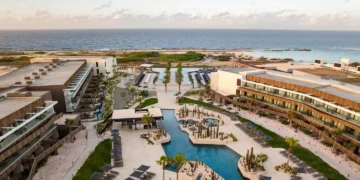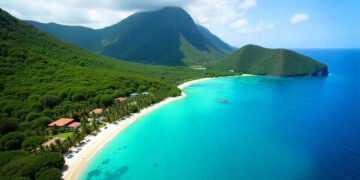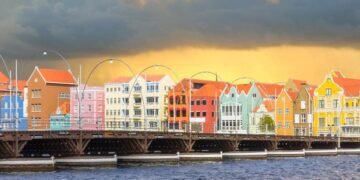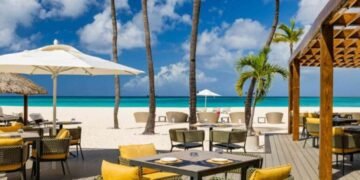ORANJESTAD – Aruba, a highly sought-after tourist destination, is facing a delicate balance between tourism and sustainability. As one of the Caribbean’s gems, the island is a small piece of Earth with an immense legacy of human history and geological heritage, yet its natural environment is increasingly vulnerable to exploitation. This is evident to those who have lived here long enough to notice the changes.
Aruba’s ecosystem is fragile—what once thrived, like the vibrant marine life just below the surface, is now in decline. From octopuses and seahorses to urchin-covered coral reefs and sea turtles, these marine wonders were once so abundant that they could be seen with a simple snorkel. Yet, due to carelessness, overexploitation, and ignorance, many of these species are now barely visible.
While global attention on biodiversity has often focused on rainforests, marine biodiversity has started to gain the recognition it deserves. Aruba’s own marine environments, alongside its terrestrial ecosystems, have been significantly altered by human activity. One such example is the cacalaca di lama (sea cockroach), a crustacean once commonly found along Aruba’s shores. This small creature, known scientifically as Emerita, has nearly vanished from our beaches.
The Disappearance of the Cacalaca di Lama
Growing up on Aruba, many children spent their days exploring the beaches—digging through the wet sand at the water’s edge to find treasures like crabs, worms, and of course, the ever-elusive cacalaca di lama. These mole crabs, also called sand fleas, were once so common that they were a staple of childhood memories. Now, it’s rare to find even one, let alone a colony.
The cacalaca di lama is a resilient creature, about 2.5 cm in length, with a tough exoskeleton that protects it from predators. It burrows into the sand at the edge of the surf, using its feathery antennae to filter food from the water. In colonies, these crabs work together to burrow quickly when the waves loosen the sand. Their ability to quickly disappear beneath the surface is a strategy to avoid seabirds and fish that prey on them.
But where are they now? What happened to the cacalaca di lama and the other native creatures of Aruba’s shores? The answer may lie in the overexploitation and the changing conditions of the island’s ecosystems. These changes remind us of the importance of preserving Aruba’s environment—and the island’s incredible biodiversity.
Discover Aruba’s Heritage at Etnia Nativa
If you’re interested in learning more about Aruba’s authentic identity, cultural heritage, and natural environment, there’s no better place than Etnia Nativa. The living museum provides an immersive experience into Aruba’s past, from its native wildlife to its traditions.
Since its founding in 1994, Etnia Nativa has been dedicated to preserving and sharing Aruba’s rich heritage. As co-founders of Arikok National Park, the Archaeological Museum of Aruba, and contributors to several artisan and cultural foundations, the museum offers an unparalleled journey into the island’s story.
Don’t wait until the end of your stay—book your visit today and experience the vibrant history and culture of Aruba, while contributing to its preservation for future generations.
Photo credits : https://www.arubatoday.com/episode-cccxii-312-cacalaca-di-lama-emerita-crustacean/























Discussion about this post